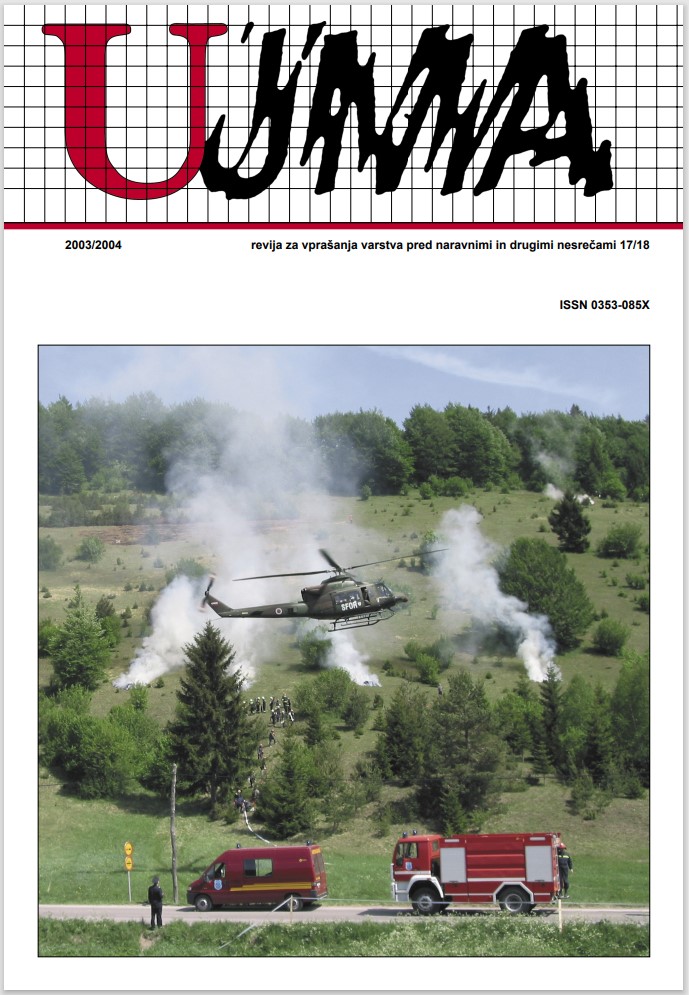THE USE OF DOGS IN HUMANITARIAN MINE CLEARING
Abstract
Modern humanitarian mine clearing uses three main techniques. In addition to mine clearance by hand and by machine around 700 specially trained dogs are used around the world for mine clearing. Dogs have been used in mine clearing since the Second World War and within humanitarian mine clearing efforts since 1989. The first international conference on the use of dogs in mine detection and mine clearance programmes in Afghanistan and Kosovo were very significant for larger users of mine detection dogs (MDD). The dogs used most often for mine-detecting are German and Belgian malinois. The selection and training of dogs is a very lengthy one, taking from two to three years depending on the centre. Dogs are not generally used directly on confirmed minefields, but for detecting, checking and reducing the number of suspected minefields. There are two techniques for using dogs, indirectly where the dog carries out detection in a laboratory on the basis of air samples from suspected minefields, and the direct technique where dogs detect in the field. The latter technique includes the freerunning method, and the short leash and long leash methods. The most common is the long leash method which requires a suspected area to be divided into a grid system – the bands between squares (10 x 10 m) are cleared by hand while the squares are checked by at least two dogs. Dogs have some limitations relating to temperature and climate and the type of terrain. Another important factor in detection is a dog’s controller. The use of MDD is regulated by international standards on humanitarian mine-clearing.
References
Banks, E., 2000. EDD Standards, Explosive Detecting Dogs, the need for standards and accreditation. Predstavitev, Ig.
McLean, G. I., 2001. Designer Dogs: Improving the Quality of Mine Detection Dogs. Geneva International Centre for Humanitarian Demining, Geneva.
McLean, G. I., 2003. Mine Detection Dogs, Training, Operations and Odour Detection. Geneva International Centre for Humanitarian Demining, Geneva.
Mikulić, D., 1999. Tehnika za razminiranje. Zagreb.
Radić, V., 2001. Minsko ratovanje. Beograd.
Ka svetu bez mine. Okrugli sto u Novom Sadu, Podgorici i Prištini. Zbornik autorizovanih izlaganja na opštu temu - Protiv antipersonalnih mina. Beograd, 2000.
International Mine Action Standards. Issue 2, 1 March 2003, IMAS.
The Mine Detection Dog Bibliography. Version 1.0, Juillet 2002, prepared for GICHD. Zgoščenka s povzetki in bibliografijo, vezano na pse za iskanje min in njihovo uporabo.
Avtorjevi zapiski in zaznamki.
Osebni stiki z:
Michel Dufort (Iraq Mine Action Programme)
Steve Saunders (Mine Action Co-ordination Centre Kosovo)
Callie Calitz (UNMEE Mine Action Coordination Centre – Eritreja)
Downloads
Published
Issue
Section
License

This work is licensed under a Creative Commons Attribution-NonCommercial-NoDerivatives 4.0 International License.
The articles are made available to the public under Creative Commons Attribution-NonCommercial-NoDerivatives 4.0 International (CC BY-NC-ND 4.0).


